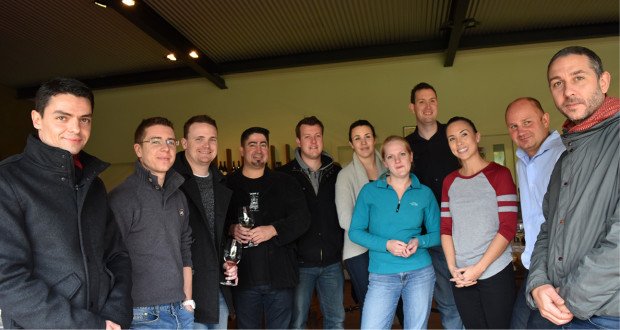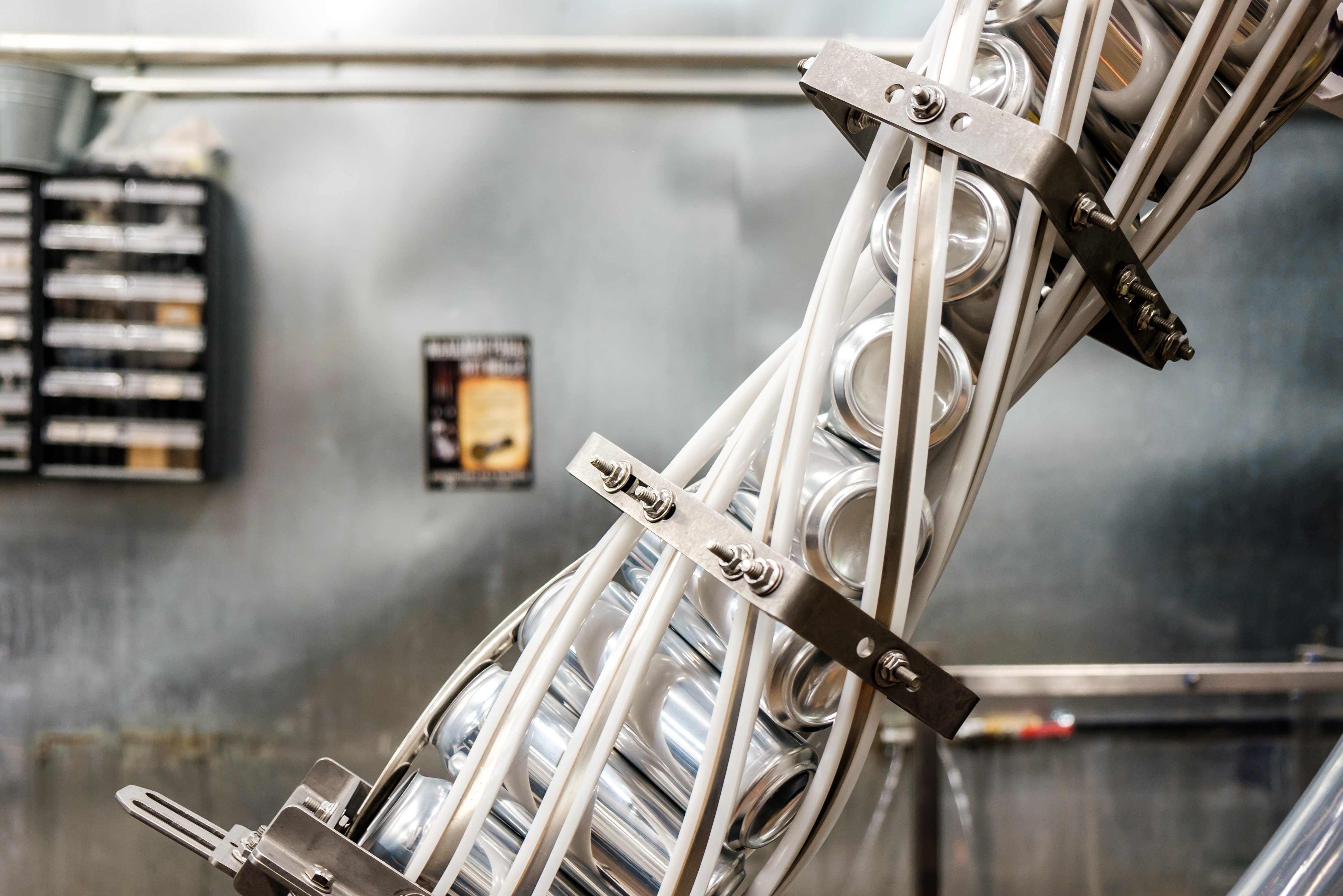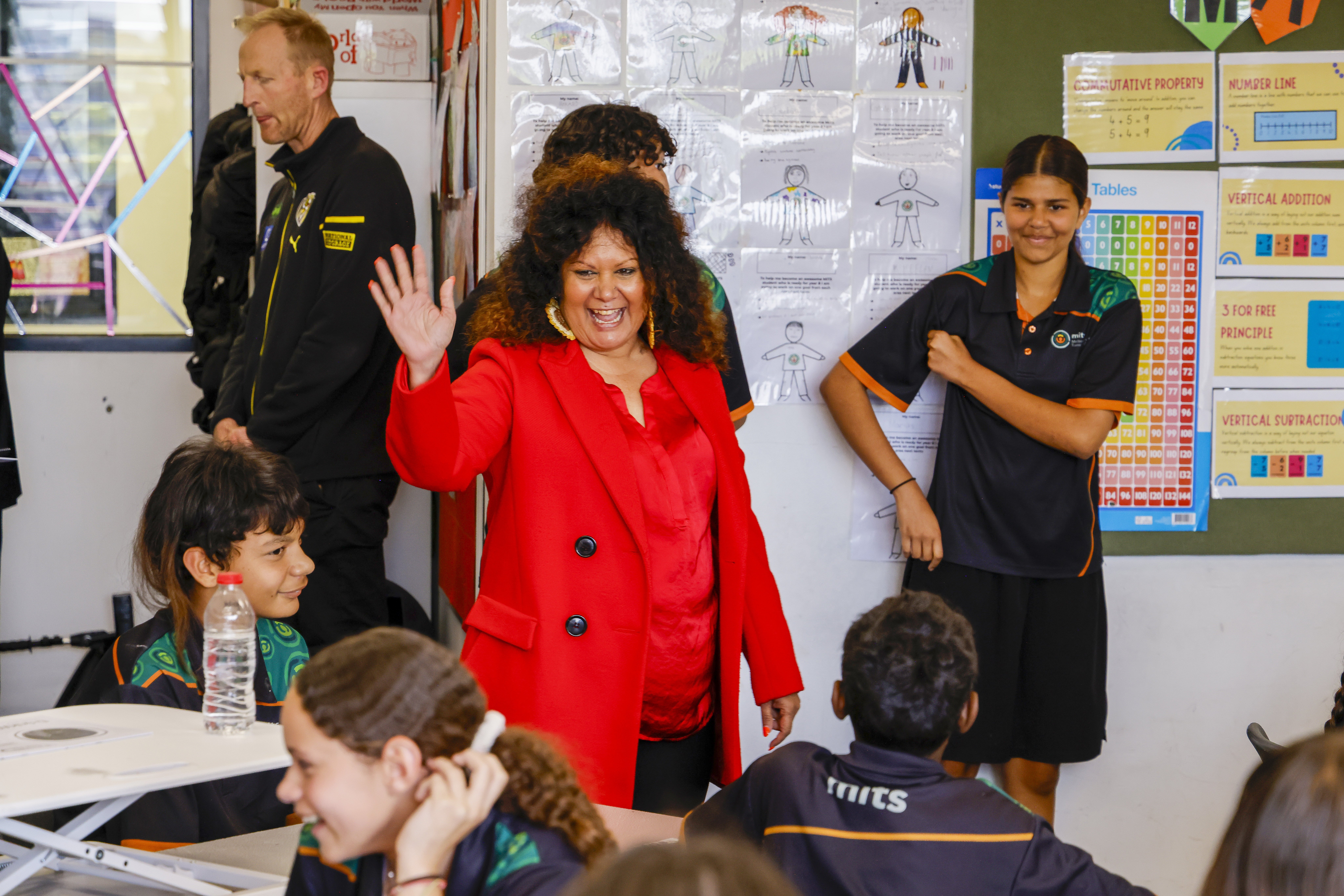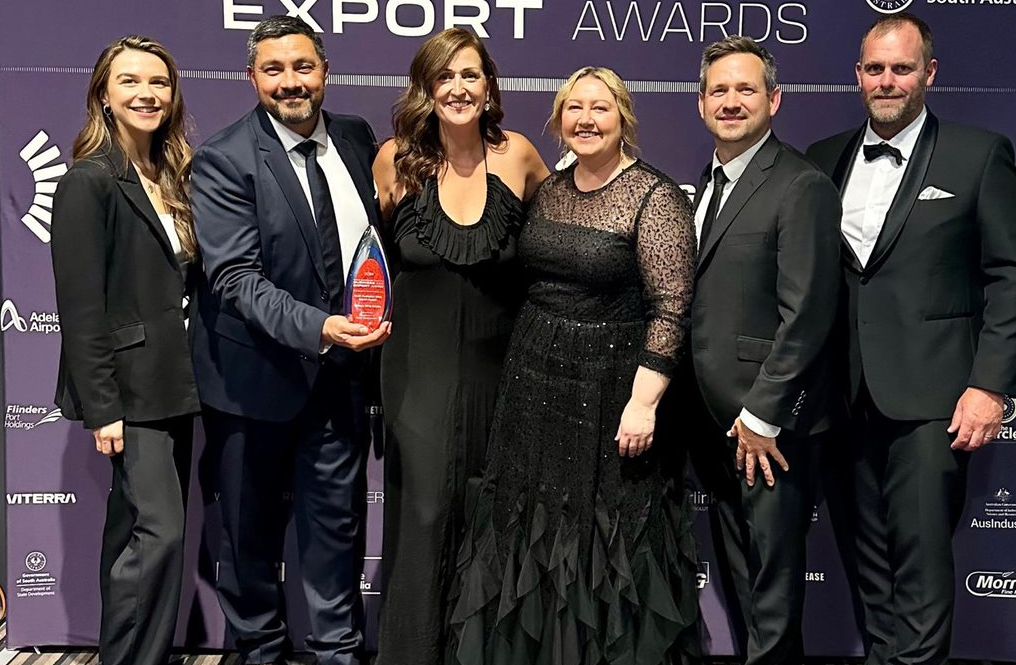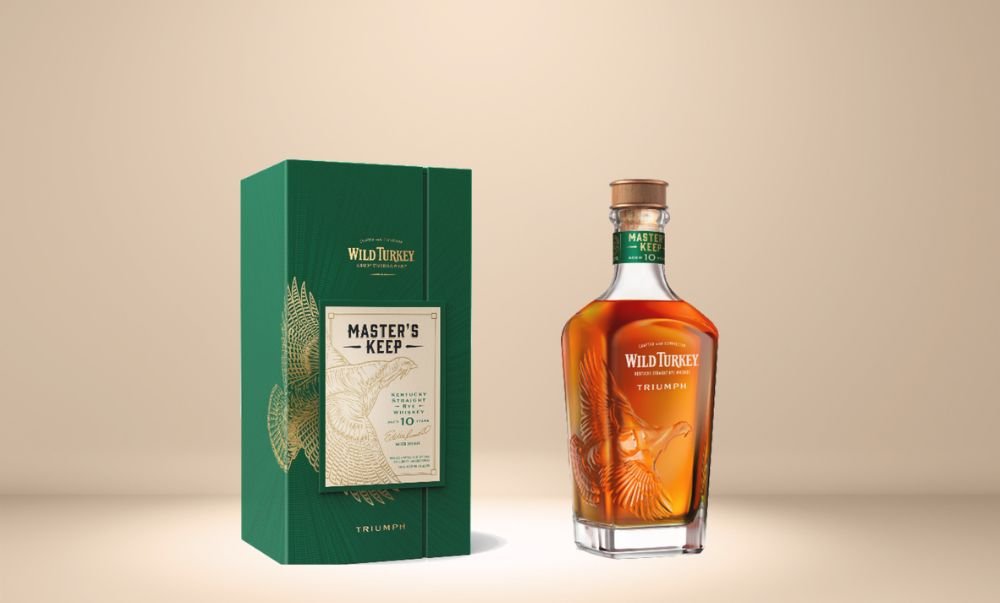McWilliam’s Wines is one of Australia’s most respected wine businesses with vineyards in premium wine regions stretching from the Hunter Valley to Western Australia.
Five years ago we interviewed the then newly appointed CEO Rob Blackwell, to get an understanding of the work that lay in front of him in a challenging retail environment and a portfolio of over 1,100 products. Upon hearing that this year he intends on stepping down, drinks trade rushed to catch up with the respected business leader to discuss the journey of the last five years and how the this iconic family owned wine business is placed for the future.
The McWilliam family name stands for a long history of excellence in winemaking, a tradition which stretches back to the earliest days of the Australian wine industry. Since the time Samuel McWilliam planted his first vines, the McWilliam family history has been closely intertwined with the stories of the New South Wales and Australian wine industries. From JJ McWilliam’s ambitious plan to pioneer Griffith as a wine region to more recent viticultural ventures in other parts of New South Wales and Western Australia, the McWilliam family has been a leader in the journey that has seen Australian wines move to the forefront of international respect and popularity.
From humble beginnings, the family winery has continued to grow in size and stature. The knowledge, skill and passion that result from such a long family involvement in the Australian wine industry is the reason behind the quality and distinction of each bottle of wine produced by McWilliam’s.
In the more recent history of the business, McWilliams Wines has recently undergone a significant ‘five-year’ journey of restructuring under the guidance of CEO Rob Blackwell. Not long ago there existed a portfolio in excess of 1,100 products, whereas today the business has refocused its efforts on supporting and growing a portfolio of 300.
“We’ve gone through an aggressive exercise in scaling back the number of brands and products, which has now enabled us to focus on the core brands and products within the portfolio. So a bit of a mantra around McWilliam’s has been “doing less is more”; meaning that by focusing on fewer things, we can do them far better”, said Rob.
Speaking about the highlights of his role, Rob said: “There was the opportunity to build a new team at McWilliam’s and that was across all of our functions including sales, marketing, finance, supply chain and winemaking. Within my first few months as CEO, I had the opportunity to look at the business and its people, and bring in some new people - a few of whom were from outside of the wine industry. This brought a set of new skills and experiences from the industries they had previously worked in, which in turn brought in new ideas to McWilliam’s.
“The second piece that came out of that was the establishment of a new business strategy for McWilliam’s. With new staff on board, together we built that strategy; key to which was refining and building a stronger brand portfolio. McWilliam’s historically has had a lot of brands and a lot of products within each of those brands.
“And one of the early initiatives of the business was to set up a new product development team, and we’re now the most successful NPD wine company in Australia – and that’s measured by Aztec. That’s really pleasing in terms of that being one of the investments we made and the returns McWilliam’s and our retail partners are getting from that.
“The next element was that we focused on building strong customer relationships. In our domestic business, we’ve been on a very long journey bringing new people in, listening to customers – understanding their needs – and partnering with them to develop new products, or extensions of existing products, that help build the wine category in their respective businesses.
“During the first 12 months, it was quite tough as our customers were seeing a lot of change, and some were getting quite anxious about the direction we were taking the business and what we were doing. But, over the last two years, our customers have started speaking in retrospect, saying that they now understand why we made so many changes, plus now we’re getting results from it. So that has been a really pleasing part of going on the journey and now we’ve come out on the other side with very strong customer relationships which is showing in our sales results, and that is the end measure.”
FAMILY OWNED
McWilliam’s Wines is proudly 100 per cent family owned again having recently bought back the 20 per cent of the business that the ANZ Bank and E&J Gallo owned.
“We are incredibly proud of where we are. I had a lot of people join me around the same time that I joined and, as a team, we’ve made a lot of changes. The sales performance is strong now – we’re pleased with our margin growth – and the strategy that we’ve put in place is working. It’s easy to say that now, but sometimes when you put a strategy in place, some elements work and some don’t, but across our key elements they’re all working for us, so it’s pleasing.
“But it’s been a difficult few years getting there, I have a huge vote of thanks to give to my team for sticking with it and pursuing the strategy; because there’s certainly been times when we’ve said this is tough and questioned if we’re going to get to where we want to be – and we have.”
NEW EXCLUSIVE MEMBERS PROGRAM LAUNCHED - 3RD OCTOBER
“What we’ve done at Mount Pleasant – which is arguably Australia’s greatest Hunter Valley brand - is launch two new wine clubs. One is called the O’Shea Club, named after the winemaker who was with Mount Pleasant for almost 40 years, and the second club is the 1880 club, which was the year the first vines were planted in the Hunter Valley. These clubs are about giving members access to exclusive wine releases and events. Both were launched in October, and the membership is growing rapidly.
CHANGES TO BUSINESS STRUCTURE
The Mount Pleasant restaurant was closed and a third party catering contractor has been appointed, focusing more on weddings and corporate events.
“The Cellar Door offering has been improved. Running a restaurant was never one of our core competencies – we’re winemakers, not restaurateurs – which is why we decided to give the operation to a professional event operator who can do it really well."
SALES TEAM
One of the most significant changes made during Blackwell’s tenure has been the introduction of a new Customer Contact Centre. The team is made up of eight experienced call specialists who call 3000+ independent and on-premise accounts on a set call cycle. The reduction of account mangers on the ground and re-structuring of the sales territories has proven to be an effective and popular move.
“Our customer contact centre is quite different; a lot of companies operate by waiting for customers to call them, but ours is an outbound call centre. We have a team of eight contact centre specialists – so we’ve imported experience. This team has a listing of our customers; they call each week, fortnight or every month, depending on what’s been agreed with the customer. Order history and all future promotional offer information is at hand; quite a few of our customers have turned around and said that this is more productive than having reps turn up in store with the potential to disrupting staff.
“We’ve now got a structured time that we can be more productive in. We’ve had overwhelmingly good responses to this. The number of customers we’ve lost you can count on one hand, out of 3,000+ customers.
“And I guess the end measure is always sales – and through this we’re growing these customers businesses again, albeit in a different way; a more professional, more structured way to service customers.
“Because we regularly review transitioning customers from contract center to rep call or the other way around we need that flexibility.”
SUPPLY CHAIN
Major changes are set to be introduced with the moving of the bottling line and warehouse in Chullora to a new state of the art site with an investment of approximately $10million
“That will deliver significant cost reductions to McWilliam’s in reduced bottling and logistics costs and that’s why we’re doing it,” said Blackwell.
IMPROVEMENT TO WINERY OPERATING EFFICIENCIES
“Our biggest wine operation is at Hanwood in NSW and what we’ve done is what I call “right- sized” the winery operations.
“Where we said we needed to get to was an operating cost that would enable us to run it efficiently. As we start to grow the business again, particularly with our exports sales, we can start resourcing out. It’s now built with a very low flat cost base and we can ramp that up or down depending on the volume of each given vintage. A part of this includes Capex investment that improves winery operation and efficiencies alongside renegotiating grower contracts.”
SKU REDUCTION
Ensuring continued focus on the core brands: McWilliams, Evans & Tate and Mt Pleasant, the business has reduced the portfolio from 23 to six brands, including imported brands Henkell, Taittinger and Mateus.
To accomplish this, Brand’s of Coonawara was sold to Casella Family Brands late last year and, simply put, the sale enables McWilliam’s to increase their investment in the core brands both domestically and in the international markets.
“The great story for McWilliam’s is around NPD; the Australian wine market is growing through the introduction of new products – that’s the key element of growth. So we’re continuing new product development across table wines and we’re also looking at our fortified wines – our Tawny etc. – because there are opportunities there as well. One really good example is that we were the first company to launch a red blend in Australia called Wildling. We launched the product about nine months ago and it’s been very successful.
“We’ve also launched a new, oakier style chardonnay. While Australians have embraced New Zealand sauvignon blanc over the last decade, we’re seeing customers returning to Australian chardonnay once more. Not those big, heavy chardonnays we knew ten-20 years ago, but a lighter style that can carry oak. We’ve launched a brand called E&T Butterball, which is in that oakier style of chardonnay and it’s been one of the more successful white wine launches in the last two years.
“We’re identifying new opportunities and getting them to market. Through our NPD process we’ve really focused on speed to market and working efficiently. We’re working on 12-14 weeks from concept through to shelf.”
DOMESTIC SALES
Strong performance results means that sales are ahead of budget Year To Date, and a renewed focus on fortified wines has led to the development of four NPD concepts.
“To bring the whole thing together, we’ve got to think about how much and when – so we’ve got another 30 new products (across the core brands) coming into the market in the next six months, so that gives you some sort of idea as to how much we’re doing and in that sort of time frame.”
NEW PRODUCT DEVELOPMENT
McWilliam’s Wine is recognised in the market as being the industry leader when it comes to NPD’s with a reputation of being the fastest to bring an NPD to life from; concept to shelf, all supported with structured launch programs. Over the past 18 months McWilliam’s have successfully launched 30 such products, of which the Evans & Tate Butterball is the most successful Chardonnay NPD launched.
Top NPD launches from McWilliam’s include:
• Evans & Tate Butterball
• Evans & Tate Cabernet Sauvignon
• Wildling
• On The Grapevine
• McWilliam’s Appellation
• 1877
• 842
Traditionally McWilliam’s has been very strong in Fortifieds.
“We’ve had conversations with retailers Fortified’s for younger consumers; the category is flat so we want to bring new ideas to help rebuild this traditionally very strong segment. You’ll see different variants released in March and April across different retails.”
INTERNATIONAL SALES
“Asia is a really important market to us. We have a good business in Hong Kong, we’ve established new distributors in Singapore and Malaysia, and we’re in discussions with some of the major distributors in Japan. We’ve been working to find the right partner for about three years, and have now signed a contract with a Chinese national distributor. We also have a new distributor in the USA for both the McWilliam’s and Evans & Tate brands. We’ve established a USA sales team with plenty of wine experience and launched the Wilding Red blend there and it’s doing well.”
EXPORT MARKETS
Export markets are a key focus for McWilliam’s now that the business has taken back control of its international markets.
“We’ve rationalised the markets we’re playing in – and I think this is an important point. We used to export to most of the major countries around the world and now we’re focused on three regions – Canada, USA and China. They’re our priority markets. We didn’t have much control of those markets to a degree before and now we do. We’ve begun placing our own people and we’re learning much more about those markets; dealing with customers direct. There’s nothing like hearing it directly from customers, about what works in their business and country. Our business overseas was very much McWilliam’s brand focused previously, but now we’ve introduced the Evans & Tate brand, which is one of our big brands, into those markets and that’s giving us huge growth opportunities as well.”
JEFF MCWILLIAM TO TAKE OVER AS CEO
At the end of the financial year, Blackwell will step down as CEO having largely completed the restructure and turn-around and, as with most family businesses, the McWilliam’s board have appointed Jeff McWilliam as the incoming CEO as of July 1. So what’s next for Blackwell?
“Simply, I’m just looking for my next challenge. I’ve worked in quite a few industries in my past – this is my first time in the wine industry – so I don’t have any predetermined ideas about what industry is next.”
Rob has previously worked in non-alcoholic beverages with Coca-Cola, fruit business with SPC Ardmona, he’s run his own childcare business in the United States and was CEO of Ticketek – a ticketing and media company.
“I’ve got quite a diverse background and you always bring key learnings from each of those roles, so I’ve been able to utilize those experiences during my time in the wine industry, and it’s been good.”
“At this point in time – we’ve got to a good place and we’re getting the results that we’re looking for. I think it’s important to know when the time is right to step aside, and I feel that time is now. Jeff has been our Chairman for the last two years, and I’ve worked closely with him throughout that time. We’ve been talking about him coming into the business and have spent the last six months getting him prepared to take over as CEO.”
“It’s good to say that we are 100 per cent family owned and a family member is going to take on the CEO role.”
SUCCESSION PLANS
Jeff is currently undertaking an immersion program at McWilliam’s that will help him to gain a greater understanding of the functional areas of the business, build relationships with key stakeholders and gain a thorough understanding of the strategic and operational plans.
“I think the other big part for the business and for our shareholders, is that we returned the family to 100 per cent family ownership.
“The business is 140 years old, and it was quite a defining moment for McWilliam’s to totally return to family hands, this has enabled us to have more robust conversations around succession planning in our company, and enabled us to really get focused on restructuring the company."
Share the content
